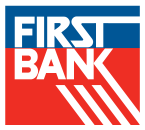Though the internet has countless uses and advantages in our daily lives, it can also make users vulnerable to fraud, identity theft, and other scams. According to a recent survey, a staggering 12 adults become a victim of cybercrime every second.
We’d like to recommend the following tips to keep you safe online:
1. Keep your computers and mobile devices up to date. Having the latest security software, web browser, and operating system are the best defenses against viruses, malware, and other online threats. Turn on automatic updates so you receive up-to-date fixes as they become available.
2. Set strong passwords. A strong password is at least eight characters in length and includes a mix of upper and lowercase letters, numbers, and special characters.
3. Watch out for phishing scams. Phishing scams use fraudulent emails and websites to trick users into disclosing private account or login information. Do not click on links or open any attachments or pop-up screens from unknown sources.
Forward phishing emails to the Federal Trade Commission (FTC) at [email protected].
Be sure to notify the company, bank, or organization impersonated in the email if you are familiar with that company or organization.
4. Keep personal information personal. Hackers can use social media profiles to decipher your passwords and answer those security questions in the password reset tools. Lock down your privacy settings and avoid posting things like birthdays, addresses, mother’s maiden name, and more. Be wary of requests to connect from people you do not know.
5. Secure your internet connection. Always protect your home wireless network with a password. When connecting to public Wi-Fi networks, be cautious about what information you are sending over it. Also, watch for ‘shoulder surfers,’ trying to catch a glimpse of what you’re typing.
6. Shop safely. Before shopping online, make sure the website uses secure technology. When you are at the checkout screen, verify the web address begins with https. Also, check to see if a tiny locked padlock symbol appears on the page.
7. Read the site’s privacy policies. Though long and complex, privacy policies tell you how the site protects the personal information it collects. If you don’t see or understand a site’s privacy policy, consider doing business elsewhere.
*Source: Symantec Corporation


